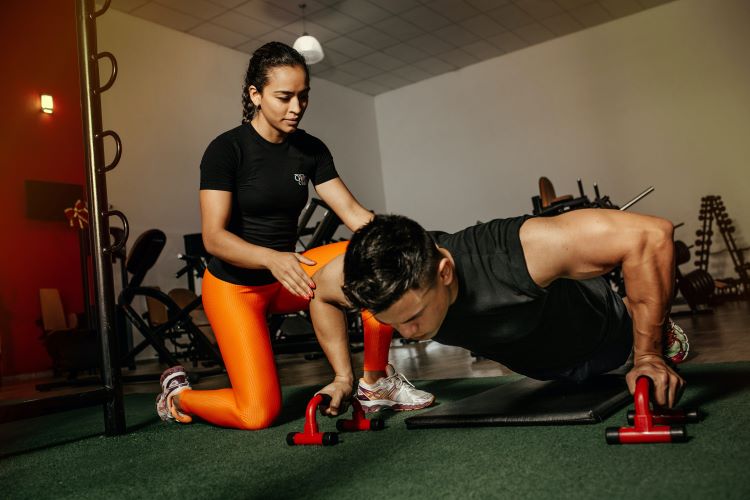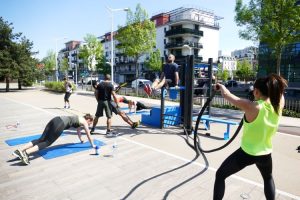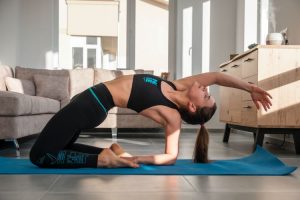A Comprehensive Guide
Introduction
In today’s fast-paced world, staying active and fit is a top priority for many. Aerobics is an excellent way to improve your cardiovascular health, boost your energy, and stay in shape. However, attending a gym or fitness class isn’t always feasible due to various constraints. The good news is that you can learn aerobics at home, allowing you to incorporate this effective exercise regimen into your daily routine. In this article, we will explore the many ways you can get started with aerobics in the comfort of your own home.
Why Choose Aerobics?
Aerobics, often referred to as cardiovascular exercise, is an essential component of a healthy lifestyle. It enhances your heart and lung function, improves blood circulation, and helps you burn calories effectively. Choosing aerobics as your preferred workout regimen offers numerous benefits, including weight management, increased stamina, and stress reduction.
Setting Up Your Space
To learn aerobics at home, you need to set up a designated space for your workouts. It could be your living room, a spare bedroom, or any area with enough room to move freely. Ensure the space is clutter-free and well-ventilated, creating a comfortable environment for your exercises. Let’s delve deeper into the key considerations for setting up your workout area:
1. Clear the Clutter
Before you start, make sure your chosen space is clutter-free. Remove any obstacles or hazards that could get in your way while exercising. This not only prevents accidents but also creates a safer and more pleasant environment for your workouts.
2. Choose the Right Location
Select a room or area in your home that provides enough room to move freely. The living room, a spare bedroom, or even your backyard can be great options. It’s essential that you feel comfortable and have ample space to perform various exercises without restrictions.
3. Good Ventilation
A well-ventilated space is essential for maintaining comfort during your workouts. Proper air circulation ensures you don’t overheat and helps you breathe easily. If you’re working out indoors, consider opening windows or using fans to keep the air fresh.
4. Adequate Lighting
Having good lighting is not only practical but also important for safety. Natural light is ideal, but if your workout area lacks it, invest in bright, energy-efficient lighting. Adequate illumination ensures you can see your surroundings and maintain proper form during exercises.
5. Mirrors
Consider placing a full-length mirror in your workout space. Mirrors are valuable for checking your form and ensuring you’re executing exercises correctly. They also provide visual feedback, helping you stay motivated and engaged in your workouts.
6. Flooring
The type of flooring in your workout area matters. Hardwood, laminate, or a fitness-friendly vinyl floor are excellent choices because they are easy to clean and offer good support. If your floor is less forgiving, you might want to invest in a fitness mat or yoga mat to cushion your movements.
7. Personal Touch
Add personal touches to your workout space to make it inviting and inspiring. Hang motivational posters or quotes, play your favorite music, and keep workout essentials like water bottles and towels nearby for convenience.
8. Childproofing
If you have young children or pets, take measures to ensure their safety. Remove any items that could pose a danger, secure cords and cables, and create a designated play area for children to keep them occupied while you exercise.
Choosing the Right Equipment

Aerobics generally doesn’t require expensive equipment. A good pair of athletic shoes with proper cushioning and support is essential. You might also consider investing in a yoga mat for floor exercises and light dumbbells for added resistance. However, many effective aerobics routines can be performed without any equipment. When it comes to practicing aerobics at home, you have the flexibility to decide whether or not to use equipment. Let’s explore the various equipment options and considerations to help you make an informed choice:
1. Athletic Shoes
- Importance: Proper footwear is paramount.
- Recommendation: Invest in a pair of athletic shoes designed for aerobics. They should provide cushioning, arch support, and stability. The right shoes can prevent discomfort and injuries during your workouts.
2. Yoga Mat
- Importance: A yoga mat adds comfort and support during floor exercises.
- Recommendation: If your aerobics routine includes exercises on the floor, consider getting a yoga mat. It provides cushioning for your body and helps maintain proper alignment.
3. Dumbbells or Resistance Bands
- Importance: These accessories can add resistance for strength training.
- Recommendation: If you’re interested in adding strength training to your aerobics routine, light dumbbells or resistance bands are excellent choices. They allow you to increase the intensity of your workouts gradually.
4. Jump Rope
- Importance: A jump rope enhances cardiovascular workouts.
- Recommendation: Jumping rope is a fantastic way to elevate your heart rate and improve coordination. It’s an inexpensive and portable tool that can be a valuable addition to your aerobics routine.
5. Fitness Tracker or App
- Importance: Monitoring your progress is motivating and helpful for tracking results.
- Recommendation: Consider using a fitness tracker or a mobile app to keep tabs on your workouts, heart rate, and overall fitness. Many apps offer guided aerobics routines as well.
6. Stability Ball
- Importance: A stability ball can be used for various exercises.
- Recommendation: Stability balls are versatile and can be incorporated into your aerobics workouts. They enhance balance, core strength, and flexibility.
7. Resistance Tubes
- Importance: Resistance tubes provide an alternative to traditional weights.
- Recommendation: Resistance tubes are compact and versatile, making them an excellent option for strength training exercises. They come in various resistance levels to suit your needs.
8. Water Bottle and Towel
- Importance: Staying hydrated is essential during workouts.
- Recommendation: Keep a water bottle within reach to stay hydrated, and have a towel nearby to wipe away sweat and maintain comfort.
It’s important to note that aerobics can be effectively practiced without any equipment at all. You can engage in bodyweight exercises that use your own weight as resistance. The choice of equipment depends on your fitness goals, preferences, and budget.
Aerobic Workouts for Beginners
If you’re new to aerobics, it’s essential to start with beginner-friendly workouts. These may include low-impact exercises like marching in place, step touches, or seated leg lifts. Gradually, as you build endurance and confidence, you can incorporate more challenging moves. Have a look at our beginners guide here.
Creating Your Aerobics Routine
Once you’re comfortable with the basics, you can create a personalized aerobics routine. Mix and match exercises to target different muscle groups and keep your workouts engaging. Don’t forget to warm up and cool down to prevent injuries.
Safety Measures
Safety should always be a priority. Pay attention to your body’s signals and avoid overexertion. Stay hydrated, maintain proper form during exercises, and consult a healthcare professional if you have any pre-existing health concerns.
Nutrition and Aerobics
Nutrition plays a pivotal role in the effectiveness of your aerobics routine. It not only fuels your workouts but also aids in recovery and overall well-being. Let’s explore how proper nutrition can complement your aerobics journey:
1. Balanced Diet
- Importance: A balanced diet provides the necessary nutrients for energy and recovery.
- Recommendation: Ensure your diet includes a variety of foods, such as fruits, vegetables, lean proteins, whole grains, and healthy fats. This balance offers a wide range of vitamins, minerals, and macronutrients.
2. Pre-Workout Fuel
- Importance: Eating the right foods before exercising ensures you have the energy needed for your aerobics sessions.
- Recommendation: Consume a light, easily digestible meal or snack about 1-2 hours before your workout. Opt for complex carbohydrates and lean protein sources, like a banana with almond butter or whole-grain toast with turkey.
3. Hydration
- Importance: Staying hydrated is crucial for overall health and workout performance.
- Recommendation: Drink water regularly throughout the day, and be sure to hydrate before, during, and after your aerobics sessions. Dehydration can lead to fatigue and muscle cramps.
4. Post-Workout Recovery
- Importance: After a workout, your body needs nutrients to recover and repair.
- Recommendation: Consume a combination of carbohydrates and protein within an hour after your aerobics session. A smoothie with fruits and protein powder or a turkey and vegetable wrap are excellent choices.
5. Meal Timing
- Importance: When you eat can affect your performance and recovery.
- Recommendation: Eating a small meal or snack 1-2 hours before exercise and another within an hour after exercise can optimize your workouts and recovery.
6. Special Considerations
- Importance: Individual dietary needs may vary.
- Recommendation: If you have specific dietary restrictions or health concerns, consider consulting with a registered dietitian or nutritionist. They can provide personalized guidance to meet your aerobics and nutritional needs.
7. Avoid Overeating
- Importance: Overeating can counteract the calorie-burning benefits of aerobics.
- Recommendation: Be mindful of portion sizes and avoid consuming excessive calories, especially if your primary goal is weight management.
8. Supplements
- Importance: Supplements can complement your diet if you have nutrient deficiencies.
- Recommendation: If you lack specific nutrients, supplements like vitamin D, iron, or omega-3 fatty acids may be recommended. However, it’s best to consult a healthcare professional before taking any supplements.
Remember that the best nutrition plan for your aerobics journey is one that aligns with your goals, preferences, and lifestyle. Pay attention to how different foods make you feel and make adjustments as needed. Additionally, always strive for a diet that is sustainable and enjoyable to maintain your motivation and commitment to your aerobics routine.
Common Mistakes to Avoid
As with any exercise, there are common mistakes to watch out for. Overtraining, neglecting proper form, and not listening to your body can lead to injuries. Avoid these pitfalls by practicing mindfulness during your workouts.
Staying Motivated
Staying motivated can be challenging, but it’s essential for long-term success. Set achievable goals, reward yourself for milestones, and find a workout buddy to keep you accountable.
Frequently Asked Questions (FAQs)
- What is the ideal duration for an aerobics workout at home?
- The ideal duration for an aerobics workout is 30-60 minutes, 3-5 times a week.
- Can I do aerobics at home without any equipment?
- Absolutely! Many aerobics exercises can be done without equipment. However, a yoga mat and light dumbbells can add variety to your routine.
- How can I ensure I’m performing aerobics safely at home?
- Prioritize safety by following proper form, staying hydrated, and listening to your body. If you have health concerns, consult a healthcare professional.
- Is aerobics suitable for all age groups?
- Yes, aerobics can be adapted to different age groups. Consult with a fitness expert for customized routines.
- Can I lose weight with aerobics at home?
- Yes, aerobics is an effective way to burn calories and aid in weight loss. Combine it with a balanced diet for the best results.
Conclusion
Learning aerobics at home is a convenient and effective way to prioritize your health and well-being. With the right space, equipment, and guidance, you can achieve your fitness goals without leaving your doorstep. So, put on your workout gear, turn up the music, and start your aerobics journey from the comfort of your own home.
Remember to, Flex at Ur Prime.





